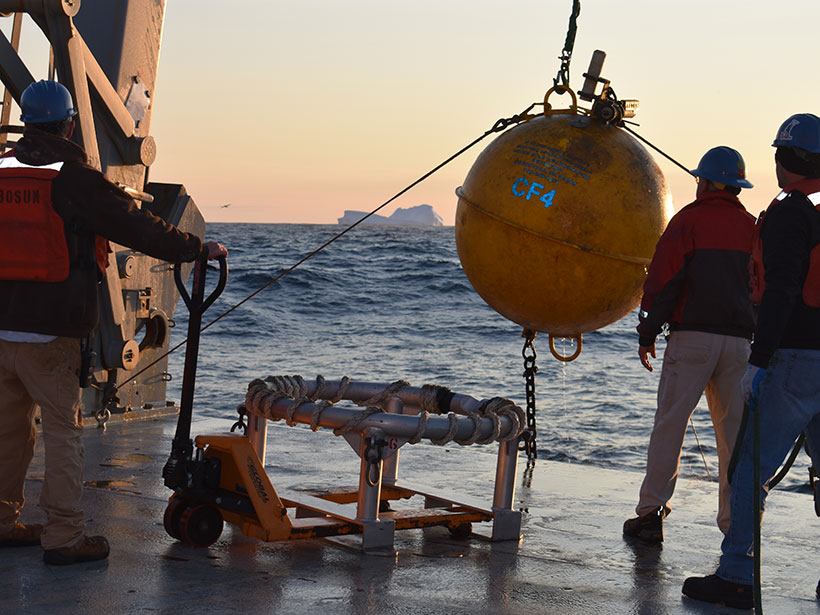Source: Journal of Geophysical Research: Oceans
Ocean data are expensive and challenging to collect, especially in rough weather and ice-covered reaches. Yet ocean metrics are critical for understanding Earth’s climate: The ocean absorbs heat from the atmosphere and distributes it around the world.
To work around limitations of floating, moored, or ship-based instruments, oceanographers estimate quantities of interest by comparing them with proxy measurements. For example, sea level anomalies are used as proxies in predicting changes in the Atlantic Meridional Overturning Circulation, which warms Europe’s climate. Such proxies can reduce the need for expansive observation systems. However, correlation is not causation, and conventional approaches for assessing the value of a proxy in estimating another quantity do not describe how different variables are related.
Loose et al. report a new method developed to replace the conventional statistical approach. Called dynamical proxy potential, the technique relies on establishing physics-based relationships between variables. The method applies concepts from computational science like uncertainty quantification and optimal observing system design.
The authors demonstrated their approach in a case study by modeling heat transport across the Iceland-Scotland ridge, a North Atlantic gateway for waters traveling north toward the Arctic Ocean. The findings revealed that winds along the Atlantic Ocean’s eastern and northern boundaries drive subsurface temperature variability in the Irminger Sea and changes in heat transport along the Iceland-Scotland ridge. By isolating the effect of wind on both variables, the model quantified the relationship between subsurface temperature and heat transport. The results showed that a single temperature observation in the Irminger Sea could reduce uncertainty in the heat transport simulation by 19%.
By linking observations and quantities of interest, the new dynamical method complements existing ocean observing efforts. The authors emphasize that this quantitative approach could help in developing a cost-effective, long-term, and sustained ocean observing system, and this technique especially could help identify beneficial future locations for observational instruments. (Journal of Geophysical Research: Oceans, https://doi.org/10.1029/2020JC016112, 2020)
—Aaron Sidder, Science Writer
Citation:
Sidder, A. (2020), Improving proxy representations of ocean properties, Eos, 101, https://doi.org/10.1029/2020EO149337. Published on 18 September 2020.
Text © 2020. AGU. CC BY-NC-ND 3.0
Except where otherwise noted, images are subject to copyright. Any reuse without express permission from the copyright owner is prohibited.
Text © 2020. AGU. CC BY-NC-ND 3.0
Except where otherwise noted, images are subject to copyright. Any reuse without express permission from the copyright owner is prohibited.

